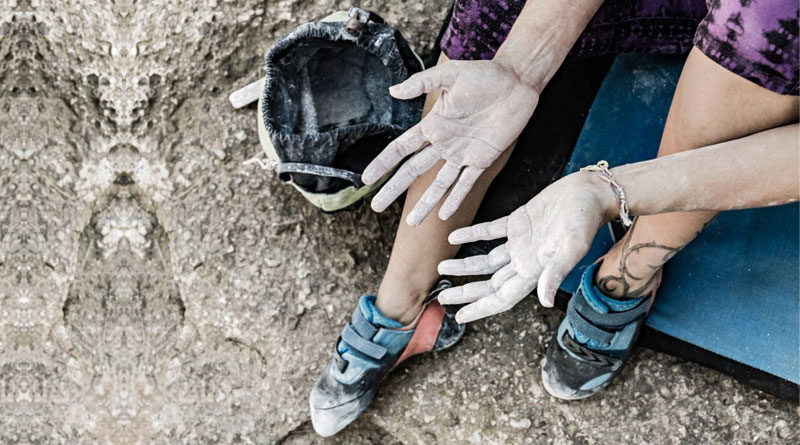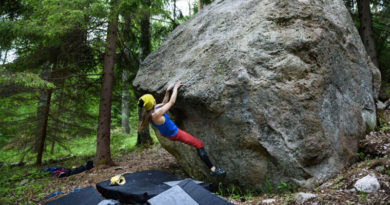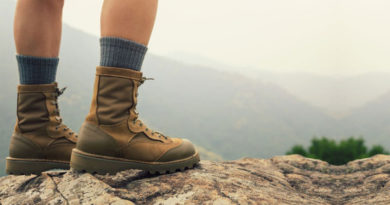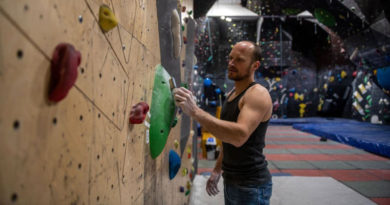How to Clean Chalk off Climbing Shoes?
The use of climbing chalk can sometimes leads to chalk building up in your shoes. Your shoes are often covered in chalk. However, leaving chalk buildup on climbing shoes can cause damage and impair performance over time. This blog post will go over the importance of cleaning chalk off climbing shoes and the consequences of leaving it on.
Materials Needed
To clean chalk off shoes, you will need a few basic materials. These include:
- Soft-bristled brush or dry cloth – to remove excess climbing chalk from the shoes
- Bowl of warm water – to mix with soap for cleaning
- Mild soap – such as dish soap or specialized shoe cleaner
- Soft cloth or sponge – to apply the cleaning solution
- Newspaper or towel – to stuff the shoes for drying
If possible, obtain a clean and dry cloth for wiping away any excess soap or water after cleaning. It’s important to note that excessive use of water or harsh chemicals can damage your shoes. So, use a gentle cleaning method and avoid soaking the shoes or using abrasive materials.
Steps to Clean Chalk off Climbing Shoes
Here are the steps you can follow:
- First, remove any excess chalk from your shoes using a soft-bristled brush or a dry cloth.
- Mix a small amount of warm water and mild soap (such as dish soap) in a bowl.
- Dip a soft cloth or sponge into the soapy water and gently rub the shoes to remove any remaining chalk.
- Rinse the shoes thoroughly with warm water to remove any soap residue.
- Stuff the shoes with newspaper or a towel to help them keep their shape as they dry.
- Allow the shoes to air dry in a well-ventilated area. Keep them away from direct sunlight or heat sources.
Avoid Damage to Shoes
It’s important to avoid damaging climbing shoes while cleaning them to ensure their longevity and performance. Here are some tips for avoiding damage:
- Use gentle cleaning methods – Climbing shoes are made of delicate materials that can be easily damaged by harsh chemicals or abrasive cleaning methods. Stick to gentle cleaning methods, such as using mild soap and warm water, and avoid using harsh chemicals or scrubbing too vigorously.
- Don’t soak the shoes – Excessive use of water can damage climbing shoes, especially those made of leather. Avoid soaking the shoes and instead use a damp cloth or sponge to gently clean the surface.
- Avoid drying in direct sunlight or heat – Heat can cause climbing shoe materials to warp or shrink. So, try to avoid drying them in direct sunlight or near a heat source. Instead, stuff the shoes with newspaper or a towel and allow them to air dry in a well-ventilated area.
By following these tips, you can clean your climbing shoes without damaging them and ensure that they continue to perform well on the rock surface.
Tips for Maintaining Climbing Shoes
Maintain your shoes so that they can perform for a longer time.
Store them Properly
After each climbing session, it’s important to store your climbing shoes properly. This means avoiding leaving them in direct sunlight or extreme temperatures. Heat can cause the shoe materials to warp or shrink. Instead, store them in a dry and cool place like in a shoe bag or box.
Avoid excessive wear and tear
Climbing shoes are designed to be used on specific surfaces and can become damaged if used on other surfaces. Avoid wearing your climbing shoes on concrete or asphalt. This can cause excessive wear and tear and affect their performance on rock surfaces.
Keep them Clean
Regular cleaning can help extend the lifespan of your climbing shoes. After each climbing session, brush off any excess dirt or debris and clean them using a gentle method, such as using mild soap and warm water.
Rotate your Shoes
Rotating your climbing shoes can help extend their lifespan by reducing wear and tear. This means alternating between two pairs of shoes or using different shoes for different types of climbing.
Get them Resoled
Over time, climbing shoe soles can wear down and affect their performance. If you notice excessive wear and tear on the soles, consider getting them resoled by a professional cobbler.
Negative Effects of Leaving Chalk on Shoes
While chalk is useful for climbers, leaving it on climbing shoes can have several negative effects on their performance and lifespan. Here are some of the most significant effects of leaving chalk on climbing shoes:
- Reduced grip – Climbing shoes rely on friction to provide grip on rock surfaces, and leaving chalk buildup on the shoes can reduce this friction. Over time, this can lead to decreased performance and make it more difficult to climb.
- Material damage – Excessive chalk buildup can damage the materials of climbing shoes, especially those made of leather. Chalk can dry out the leather and cause it to crack, which can weaken the shoe and reduce its lifespan.
- Bad odor – Chalk buildup on climbing shoes can also cause bad odors, which can be unpleasant for the climber and others around them. This is because chalk can mix with sweat and bacteria, creating a foul smell.
- Health concerns – Chalk can be harmful to the respiratory system if inhaled in large quantities. While the amount of chalk on climbing shoes is generally not significant enough to cause harm, leaving it on can increase the risk of inhaling it while climbing.
To avoid these negative effects, it’s important to clean chalk off climbing shoes regularly and maintain them properly. By doing so, climbers can ensure that their shoes perform well, last longer, and remain safe to use.
Conclusion
In conclusion, cleaning chalk off climbing shoes is an important part of maintaining their performance and longevity. Leaving chalk buildup on shoes can cause damage over time, which can affect their grip and support on rock surfaces. To clean chalk off climbing shoes, you will need basic materials, such as a soft-bristled brush, warm water, mild soap, and a soft cloth. It’s important to avoid damaging climbing shoes while cleaning them by using gentle methods, not soaking the shoes, and avoiding excessive heat or direct sunlight during drying.
Additionally, maintaining climbing shoes through proper storage, cleaning, and resoling can help extend their lifespan and ensure that they continue to perform well on the rock surface.




